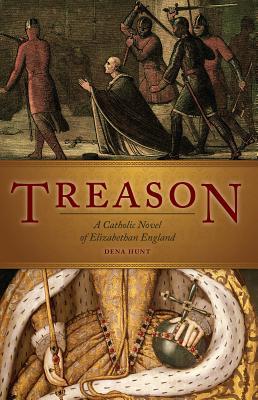This was a really interesting read if for no other reason than it examined the paranoia and cruelty extant around recusants during the latter part of Elizabeth 1st’s reign – 1581. Focussing on a small cast of mostly Catholics, who are hiding their faith and the various rites that form part of their belief system from t he Protestant majority, the novel, which occurs over a few days, explores their desperation and fear.
he Protestant majority, the novel, which occurs over a few days, explores their desperation and fear.
There are two principal characters around which the rest of the cast orbit: a young woman who desires to be a nun but was forced into marriage with a Protestant to protect her, and a freshly minted priest sent to English shores by the Society of Jesus to offer solace to English Catholics and convert other souls.
Because it’s told from the Catholic point of view alone, it does read like propaganda, the reign of “Bloody Mary” – where a few hundred “heretic” Protestants were put to death, and the mass slaughter of the Hugenots across France and other parts of Europe – conveniently forgotten. Likewise, the fact two Popes issued Bulls against Queen Elizabeth, offering to pardon anyone for murdering her, as she was a heretic, thus encouraging civil war and worse, is overlooked as the tragedy and betrayal of these good Catholic folk is portrayed.
With few exceptions, Protestants are very much the villains in this novel. They’re either bloodthirsty hunters of Catholic souls or vainglorious and self-righteous about Catholics and gloating in the deaths and exposure.
In the end, this is what troubled me; how black and white the book appeared. I didn’t mind reading about the whole religious schism and fears of plots and heretics and what it signified for the Queen and government from a Catholic point of view at all. Writing in this period myself and having spent now almost two years immersed in it, the whole question of religion and how political as well as personal it was is utterly fascinating and distressing. Knowledge of the early Renaissance (and other historical periods) also reveal how many wars and injustices, as well as bloody murder, have been committed in the name of God. This is by no means a modern phenomenon. We really haven’t learnt from history. What I didn’t like was the reductive way in which both sides of the religious coin were portrayed – as simplistic “goodies” or “baddies” – even though some of the characters themselves were really interesting beyond and because of their faith. While the novel is mostly historically accurate, a few more shades of grey would have also reflected the actual period, as well as the politics and even religion better as well.
Nonetheless, it was interesting to read about this fraught time from a different, if very myopic religious, point of view.
